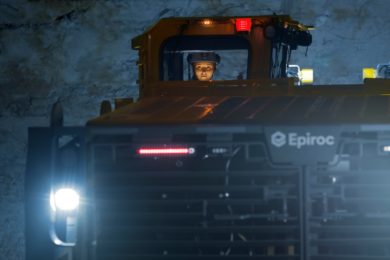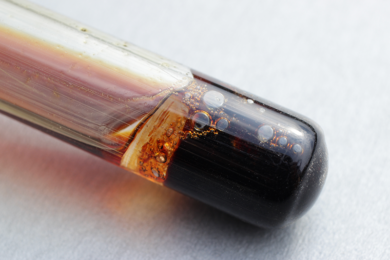There was a lot to digest in Epiroc’s 2022 Annual & Sustainability Report, published today, both in the initial CEO comments from President and CEO Helena Hedblom and then in the full breakdown on areas relating to value-creating strategy and sustainability. As usual the most interesting aspect is how it views its own progress, and the reasoning it gives for business decisions made as well as how it sees its key strengths. In 2022, orders received increased 17% to a record-high of MSEK53,222 supported by large equipment orders, and strong development in the aftermarket.
On its strategy it says it serves “attractive niches with structural growth.” By this it means it is present in niches “where our technically advanced equipment and our aftermarket solutions are performance-critical for customers’ operations and make a real positive difference.”
Approximately 87% of Epiroc revenues come from direct sales. Examples of customers given are Anglo American, Assmang Pty Ltd, Barrick Gold, Boliden, BHP, Dragados, Freeport-McMoRan, First Quantum Minerals, Glencore, Heidelberg Cement, Hochtief, LKAB, Lundin Mining, Newmont Goldcorp, Penoles, Rental Group, Rio Tinto, Roy Hill, Sibanye-Stillwater, Vale, Veidekke, Votorantim and Zublin. Its ten largest customers accounted for 17% of Epiroc’s revenues in 2022. It says that all of these ten are mining customers but none of them are dominant.
Many of Epiroc’s orders it says include automation, digitalisation and electrification solutions. It is worth pointing out the importance of aftermarket not just for Epiroc but for all these major mining equipment OEMs – for Epiroc in 2022 it represented 69% of revenues – but there is also a clear sustainability aspect to this: “About two-thirds of our revenues derive from aftermarket services and solutions, which prolong the life of our products. With mid-life upgrades, retrofit, use of secondary raw materials and closed loops, we also need fewer and less virgin materials, which contributes to a more sustainable use of resources.”
Epiroc adds: “Upgrades can also include the latest technology, automation or electrification features, allachieving measurable sustainability gains. Our automation-equipped surface drill rigs deliver more energy-efficientsolutions for our customers, with impressive levels of CO2e emissions saved.”
On the topic of acquisitions, it is the range of bolt-ons across all areas of Epiroc’s business in the past year that is impressive. This includes Remote Control Technologies (RCT), Mernok and Radlink, strengthening its position as a world-leading provider of automation and digitalisation.
Then Geoscan enhances orebody knowledge, which in turn increases productivity throughout the mining process; while CoreScan is a leader in hyperspectral scanning, core photography and 3D laser profiling of drill core, rock chips and other geological samples with the associated processing and interpretation. JTMEC provides electrical infrastructure solutions supporting the transition to electrification.
South Africa’s AARD Mining Equipment, an acquisition expected to close in Q1 2023, manufactures a wide range of mining equipment, specialising in low-profile underground machines for mines with low mining heights. The acquisition “complements Epiroc’s underground offering as well as strengthening Epiroc’s footprint in Africa.” RNP Mexico strengthens Epiroc’s presence in Latin America for rock drills. CR expands Epiroc’s first-rate offering of essential consumables.
A big emphasis in the report is made on improved safety. “Our machines are always designed with safety in focus, and we are continuously adding more safety features, such as collision avoidance systems.” Its acqisition of Mernok is timely given the mandating of Level 9 collision avoidance in South Africa in December 2022 by the DMRE. Epiroc cites a large order for collision avoidance in Africa, which will be used on more than 60 underground machines, strengthening safety for the customer’s operators while boosting productivity.
Reduced emissions and improved environmental performance are other features that are important to Epiroc customers. “Battery-electric equipment is increasingly popular among our customers, and we have received orders for both existing and new mines. One of the largest battery-electric orders in 2022 was for a greenfield mine. Canadian Malartic Partnership will use Epiroc battery-electric equipment in a new underground gold mine.” It also received several recurring orders for battery-electric equipment, which it says is a testament to how well accepted its solutions are.
Epiroc aims to offer a complete range of emissions-free equipment by 2030. “Underground, we aim even higher; as soon as in 2025, we will offer all equipment with an emissions-free alternative.” Today across both surface and underground, 39% of Epiroc’s product fleet is available as electrified solutions. It is not doing this alone – Northvolt and ABB are its major collaboration partners on battery-powered vehicles, batteries and electric powertrains though it also works with others like Kempower on specific charging solutions. Together with Northvolt, Epiroc’s battery systems supplier, it has developed a battery-electric technology platform that is modular and scalable, meaning all its batteries can be used in all different types of equipment.
On to increased productivity: “Automation is one of the keys to making operations more efficient and at the same time safer. In 2022, we received several large orders that include advanced automation solutions. These included orders from Fresnillo in Mexico, the world’s largest silver producer, CITIC Pacific Mining in Australia and Boliden in Sweden.”
Mixed fleet automation is also mentioned. “We have an OEM-agnostic approach, which means that our automation solutions work on all types of machines, including those not produced by Epiroc. With our mixed- fleet autonomous solutions, customers can also make other manufacturers’ vehicles autonomous and we have proven installations around the world. For example, together with ASI Mining, we are implementing the world’s largest autonomous mixed fleet for one of Roy Hill’s iron ore mines in Australia. In the next phase, as many as 300 vehicles will be run autonomously. We are also proud of having delivered the first autonomous mixed fleet in production in the world to Newcrest in Australia. Interesting projects are being implemented continuously.”
ASI Mining (held 34% by Epiroc) gets another nod for the Mobius Traffic Management System (TMS) platform, which is a software system that supports a broad spectrum of autonomy for mobile equipment. It supports teleoperation, semi and full autonomous modes and covers applications from drill and blast through autonomous haulage systems.
The agnostic element of automation was significantly boosted by the already mentioned acquisition of RCT at the end of 2022, which Epiroc claims makes it “the world-leading automation solutions provider not only for surface and underground rock drilling but also for underground loading and haulage.” RCT is particularly known for its extensive worldwide footprint of OEM-agnostic automation projects, especially for underground but also for surface applications such as for dozers.
Epiroc also points out that it benefits from R&D from customers, suppliers and other business partners, such as universities and interest groups. “We are involved in the Next Generation Carbon Neutral Pilots for Smart Intelligent Mining Systems (NEXGEN SIMS), Sustainable Underground Mining (SUM) projects and CharIN (creating a global interoperable standard in charging BEV-vehicles).”
On battery technology it says it has chosen a battery solution with slow charging, “which in combination with simple and quick battery-swaps means that customers can work continuously and avoid investing in more powerful electricity networks. It also keeps the battery fresh and powerful longer.” It adds: “We have a standardised production approach whereby battery cells are put in modules, which in turn are put in subpacks. This enables us to use the same type of subpacks and components for different machine models. For customers, it means quicker roll-out of battery-electric models as well as the ability to perform battery conversions for their existing fleet. With increasing volume, we can achieve scale in production, lower our inventories and perform service in a more efficient way.” It offers what is says is the world’s first battery for the mining industry with CE certification that complies with the Low Voltage Directive, the EMC Directive and the Radio Equipment Directive.
Batteries as a Service gives customers all the benefits of electric power without carrying the risk of owning the batteries themselves. “We take full responsibility for the batteries with a truly circular business model.” Battery conversion is another big grwoth area, well covered by IM – this has included conversions of the ST1030 in both Canada and Spain but the first truck conversion is also in progress in Spain – a MT436B. These solutions – Batteries as a Service and battery conversions are booked as service revenues.










